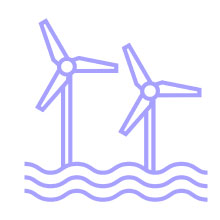American investors and companies that are looking at India as their next big opportunity or an alternative supply chain node to China, as well as Indian companies seeking to enter or expand their footprint in the world’s biggest market, should pay close attention to the recent trajectory of security and trade ties between the US and India. The longstanding India-Pakistan conflict over Kashmir, in which President Trump appeared to be taking a side, as well as linked trade and energy tensions, have merged into a new round of challenges for a bilateral relationship that, despite significant gains under recent administrations, remains dogged by a history of mistrust. While there are offramps, we expect the standoff to continue in the short term—the implications of which could include higher prices for Indian goods sold in the US and, if the bad blood endures, slower progress in building closer commercial ties in the areas of defense, strategic technologies and energy.
What Changed
Despite the ostensibly close relationship between President Trump and Prime Minister Modi and multiple, high-profile rounds of trade negotiations, the two countries failed to close an interim agreement on trade before the August 1st deadline President Trump imposed for enacting his reciprocal tariffs. As a result, on August 7th, about half of all goods from India will face a 25% levy upon arrival in the US, far higher than India’s fellow QUAD member Japan (15%), its neighbor Bangladesh (20%) and archrival Pakistan (19%)—all points of potential embarrassment to the Modi Government. President Trump also announced that he was shortening the timeline for Russia to enter peace negotiations with Ukraine. This means that, by next week, India could face unspecified secondary tariffs that would stack on top of the reciprocal tariff rate if it does not halt its significant purchases of Russian oil.
Adding insult to injury, President Trump posted a series of messages on Truth Social that, while calling India “a friend,” subjected it to public criticism that no other trade sparring partner received. Among other things, he took India to task for being a major buyer of Russian arms and energy while Russia refused to stop killing in Ukraine; called the Indian economy “dead;” labelled the country’s tariffs “too high” and non-tariff trade barriers “strenuous and obnoxious;” and described the bilateral trade deficit as “massive.” He also mused that “[m]aybe [Pakistan] will be selling oil to India one day” after announcing a trade deal with Pakistan that included a partnership to develop its oil reserves. (After lavishing all this attention on India without obtaining any last-minute concessions, he later posted “I don’t care what India does with Russia.”)
In the face of this “truth”-lashing, India adopted a stoic public stance: On Friday, a spokesman with the Ministry of External Affairs (MEA) noted the relationship had weathered “several” transitions and challenges, said that India remained focused on the “substantive” bilateral agenda, and expressed confidence the relationship would “move forward.” Unnamed sources in an Indian wire service report clarified that the reciprocal tariffs would not apply to products like iPhones and generic drugs, attempting to tamp down the outrage in the local press. On Saturday, multiple unnamed Indian officials were quoted saying India had not adopted an official policy of ending oil purchases from Russia, even as some data suggested state-owned oil companies had stopped doing so. The day before, the MEA had noted that its relationships with other countries “stand on their own merit.” On Monday, President Trump, despite his earlier suggestion of not caring what India did with Russia, responded with another social media post, accusing India of not caring “how many people in Ukraine are being killed by the Russian War Machine” and taking the discounted oil it bought from Russia and “selling it on the Open Market for big profits.” He also declared that he “will be substantially raising the Tariff paid by India to the USA.”
Today, the president signed an executive order that, within 21 days, will result in an additional 25% tariff on top of the 25% reciprocal tariff rate applicable to goods from India. The order explicitly links this additional tariff to India’s purchases of oil from Russia. At 50%, the tariff rate would be as high as Brazil and higher than the blanket 30% rate imposed on most goods from China.
What is one to make of all this tumult happening so fast? In one light, trade negotiations between the US and India have always been difficult, so, in some ways, this is par for the course. Despite significant investment of time and effort, the two countries were unable to close even a mini-deal in President Turmp’s first term due to disputes about equal benefits to both sides. This time around, bureaucrats from the two countries appeared to have reached a written accord only for President Trump to reject the terms earlier this month, apparently because India refused to relent on certain standards that kept US agricultural and dairy products from being sold in India. This likely explains the president’s posts in what appeared to be an attempt to jawbone India into additional concessions at the last minute. Given this context, one might even think that his rhetoric is not that big a deal—a bunch of hot air after coming so close—especially since the reciprocal tariffs won’t apply to major Indian exports like electronics and medicine. But that would be seeing only part of the picture.
US-India relations have been heading in the wrong direction for several months. President Trump’s credit-taking for ending the India-Pakistan fighting in May has gone down negatively with the Indian public. It also created political headaches for Prime Minister Modi, subjecting him to multiple rounds of attack from the political opposition, because India has long rejected even the appearance of third-party mediation of the Indo-Pak dispute over Kashmir. Attempts by both sides to smooth things over have only resulted in gobbledygook, hard-to-credit statements from both sides and lingering questions about US intervention.
Things got worse when President Trump lavished special attention on Pakistan in June, hosting the chief of staff of its military at the White House—the man who India sees as responsible for the terrorist attack in Kashmir that set off the cross-border skirmish. India responded with a “private” diplomatic protest and, according to some, warming gestures toward China.
On the trade front, the worst may be yet to come.
On the trade front, the worst may be yet to come. Key Indian exports are not subject to reciprocal tariffs, or today’s additional 25% “Russian oil” tariff, only because their sectors are the focus of official US investigations assessing whether reliance on foreign production threatens national security. Tariffs from these Section 232 inquiries are likely to be higher than the reciprocal tariffs— yesterday, for example, President Trump threatened to impose levies on pharmaceuticals that, over time, could go as high as 250% once that investigation is complete later this month. There’s a lot at stake here, given that Americans are major consumers of low-cost Made-in-India generics and India is the top producer of new iPhones bought in America. Both sides may even have an interest in waiting to make progress on the trade front until the extent of the Section 232 findings due this month is clear—it maximizes US leverage and allows India to ensure any eventual deal delivers assurances on these rates.
The Off Ramp
If history is any guide, both countries can stop this decline, and they have a mutual interest in doing so. Previously, India’s oil procurement has been highly responsive to US sanction threats, with India—over time—bringing an end to purchases of Venezuelan and Iranian oil. The US is India’s number one trading partner and, critically, the top export market for Indian companies, so President Trump’s tariffs will bite. This helps explain why India appears to have made significant concessions at the trade table, with only President Trump’s maximalist demands preventing an agreement on an interim accord. An immediate and total cessation of Indian purchases of Russian oil and new tariffs on imported pharmaceuticals or electronics are likely to have negative impacts on Americans in the form of higher prices for gasoline, as well as generic drugs and devices that millions rely on. Finally, India is scheduled to host the QUAD Leaders’ summit later this year, with everyone wanting to put on a positive face since the main boogeyman in all four members’ minds is China.
This suggests that, slowly but surely, we will see low-key attempts to repair the fraying of relations.
This suggests that, slowly but surely, we will see low-key attempts to repair the fraying of relations over the last few months in ways that allow both countries to save face with domestic constituencies. India could slowly reduce the amount of oil purchases from Russia as volumes from other sources come online. (On Sunday, OPEC said it would raise its production quotas to a two-year high, adding more than 500,000 barrels per day in September, which would lower the sticker shock to India from reduced buying of discounted Urals crude. India has multiple other options for oil purchases.) President Trump could extend the timeline for application of new tariffs on medicine or electronics to give time for more negotiations or provide an exemption for certain volumes from India. India could increase its encouragement for Russia to come to the bargaining table in Ukraine, ramping up Prime Minister Modi’s public calls for the two combatants to end the fighting. His national security advisor reportedly travels to Russia today for talks with senior Russian officials, with India’s Minister of External Affairs set to follow in two weeks.
In short, there are multiple reasons and ways for the two countries to muddle through and halt if not reverse the negative trajectory of their relationship. Both sides remain committed to additional trade negotiations, with a USTR delegation scheduled to head to Delhi for more talks later this month. Key topics in that conversation are likely to be sales of energy, arms, and agricultural and dairy products to India and quota exemptions and most-favored-nation rates for section 232 tariffs on pharmaceuticals, electronics, steel, and auto parts.
Read more from Alexander:
Trump’s Coming Global Infrastructure Play
Bipartisan Global Possibilities: Underappreciated Foreign Policy Developments




























